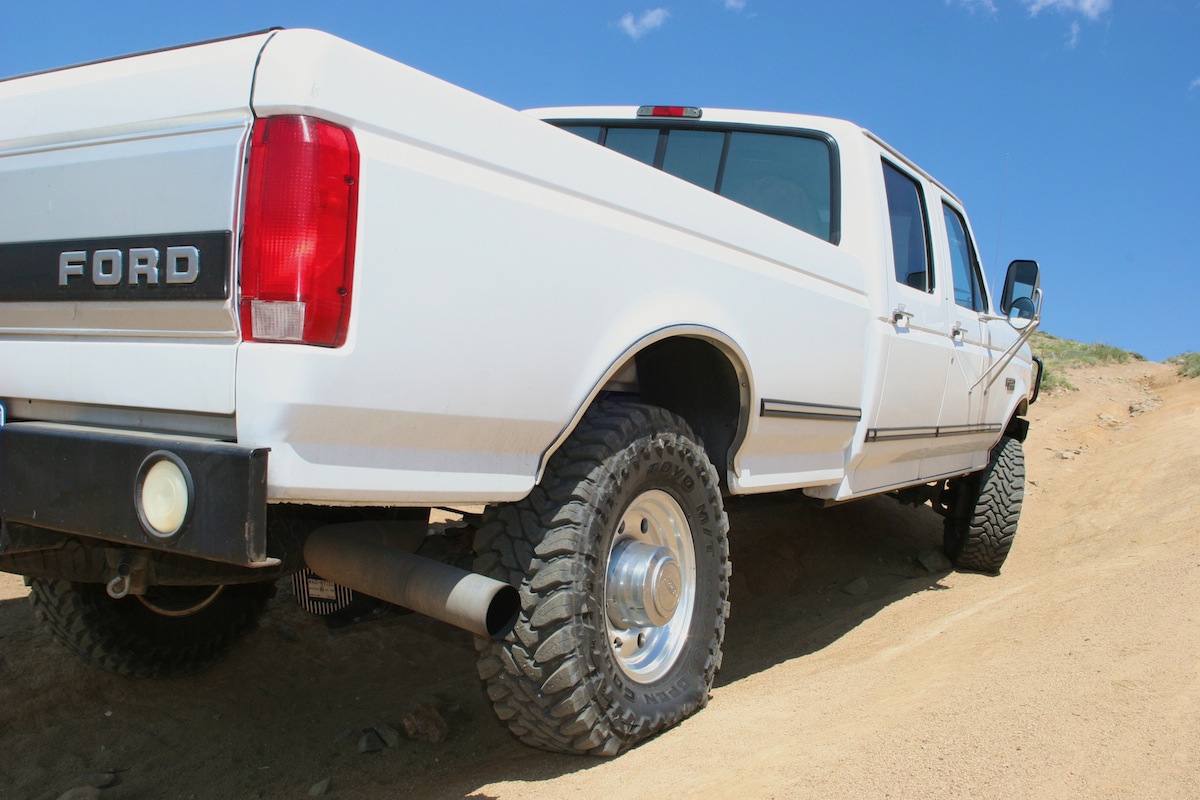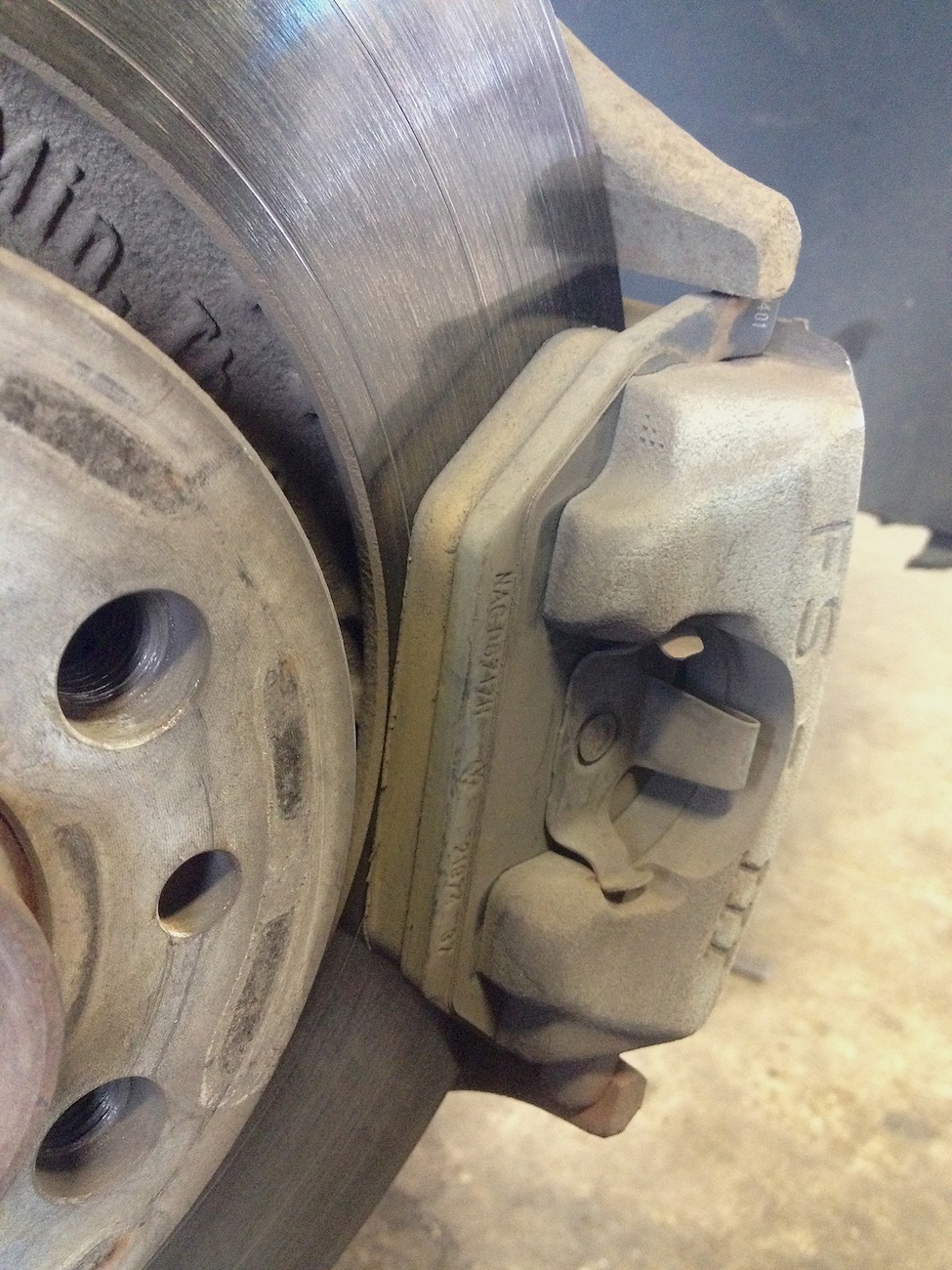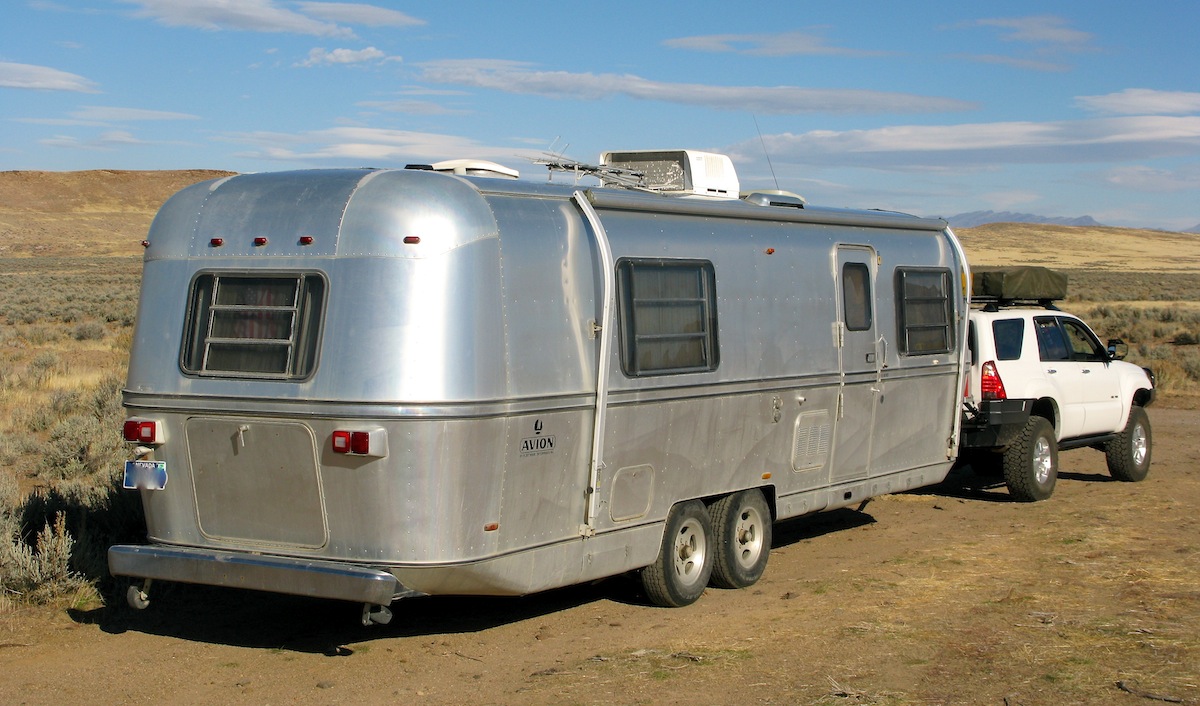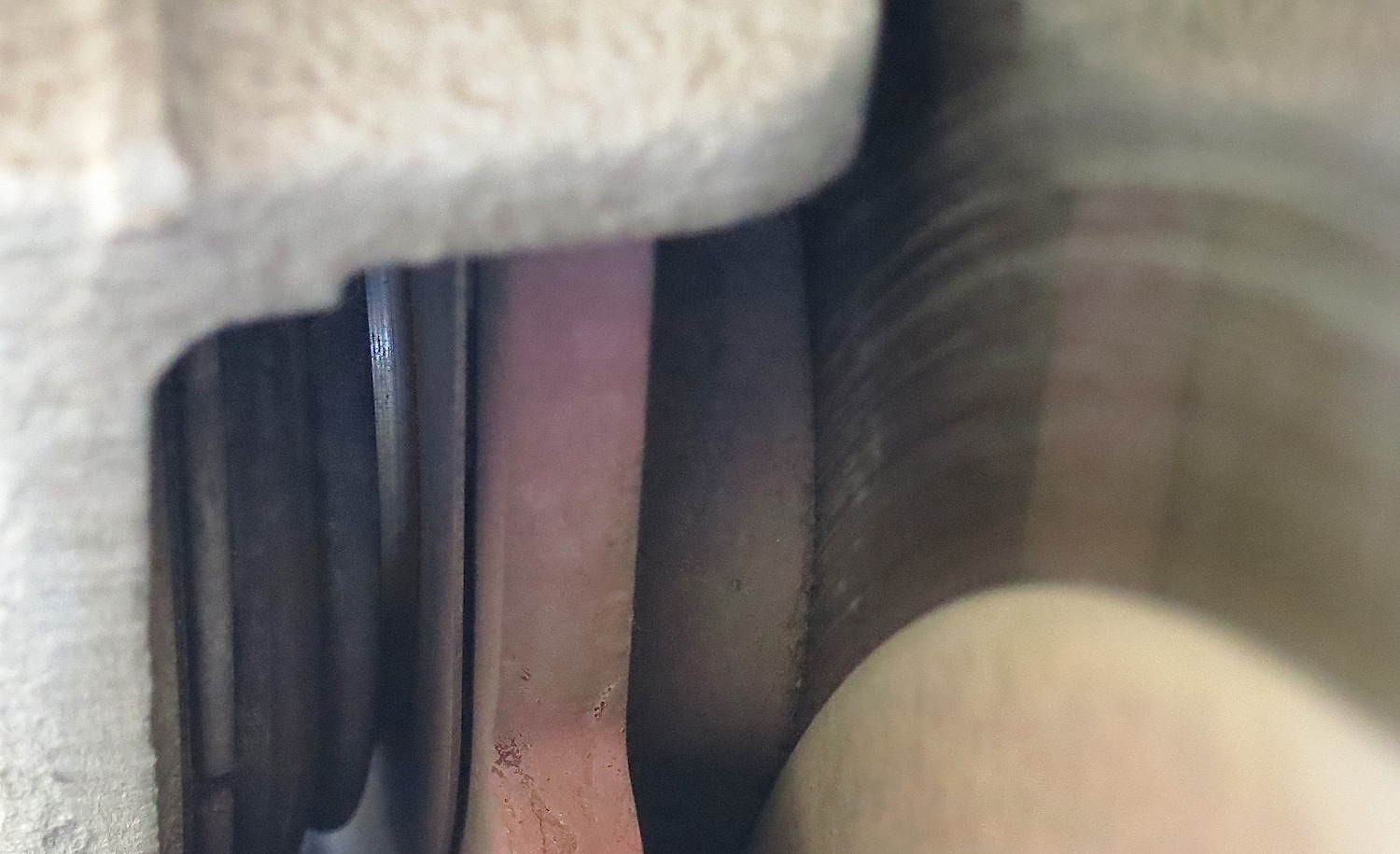Real World Examples
1) 1996 F350 7.3L Power Stroke, 4.10 differential gears, 5-speed manual transmission. This truck was conservatively modified with thirty-three inch tires, heavy bumpers, and mild engine performance modifications.
It should be noted that the older (pre-Super Duty) Ford pickups had relatively poor brakes compared to the later 1999-up trucks with four-wheel disc brakes, though they’ve never been a problem for my use and driving style.

This rig was a daily-driver commuter, long-distance road traveler, tow/hauling workhorse, off-highway toy, and magazine project for the first several years of its life. Additions to our fleet put the brakes on the rapid accumulation of miles, and is the reason this old truck has very low miles for its age.
During its 127,000 miles, Pull Dog has yet to need brake pads or shoes. Never. I used to clean and lube the caliper slide rails regularly to prevent sticking and improper wear (this maintenance is actually mentioned in the owner’s manual), adjust the rear brake shoes to keep the pedal up and the parking brake working properly, and the brake system was bleed a couple times…that’s it. When this old F350 needs brakes, you’ll likely read it here first, though I need to start driving it again before it’s going to need new friction material.

2) 2000 VW Golf 1.9L TDI (diesel), 5-speed manual tranny.
This little car has been my wife’s daily-driver for over ten years, and we take it on long car trips when a truck or 4WD isn’t required. She prefers to drive the suburban surface streets to work instead of the freeway most of the time.
It’s worth noting that while these little VW TDIs can make more power, and for some this is an enthusiast car, for us it’s just comfortable, economical transportation and it’s the one vehicle in my fleet that is bone stock. The car gets it’s recommended oil changes with premium 5W-40 synthetic oil every 10,000 miles, a new air filter every 10k because I’m a stickler for clean air, I’ve changed the transaxle lube every 50k as a precaution, and I’ve done the other minimum maintenance or repairs. Very little extra care, we just drive it.

The car’s odometer has reached 152,000, and we’ve logged all but the first 18,000. It needed rear brakes at 82k, but the fronts have yet to be touched. It’s not uncommon for moderately driven (and braked) vehicles to need rears before fronts. Based on the pictures I took when Les Schwab rotated and balanced the tires recently, I think the front pad might go another 100k; there’s plenty of meat on the pads! Maybe it will be two sets of rear pads to one set of fronts?

3) 2006 Toyota 4Runner 4.7L V8, 5-speed auto tranny, 3.73:1 gears when new and stock, before 4.88 ring & pinions were added. This car is heavily modified and very heavy, 5,500 pounds wet but unloaded, and has seen extensive off-highway use, including many technical trails, and plenty of towing miles.
With only 60,000 miles this wagon has some years ahead before I’ll be able to report if it attained the RoadTraveler.net 100k challenge. But at a little more than half way there, the brake pads are looking very thick. The odds are good.

Copyright © 2012 James Langan
